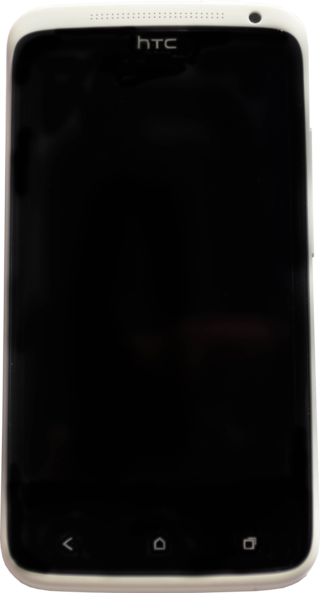G2, G02, G.II, G II, or G-2 may refer to:
G2, G02, G.II, G II, or G-2 may refer to:
E2, e2, E02, E.II, e2 or E-2 may refer to:
G4 or G.IV may refer to:

A smartphone, often simply called a phone, is a mobile device that combines the functionality of a traditional mobile phone with advanced computing capabilities. It typically has a touchscreen interface, allowing users to access a wide range of applications and services, such as web browsing, email, and social media, as well as multimedia playback and streaming. Smartphones have built-in cameras, GPS navigation, and support for various communication methods, including voice calls, text messaging, and internet-based messaging apps.
G5, G.V, G.5 or G-5 may refer to:
J2, J.II or J-2 may refer to:
G1, G01, G.I, G-1, or G One may refer to:
R1, R.I., R01 or R-1 may refer to:
G3, G03, G.III, G.3 or G-3 may refer to:
G7 is the Group of Seven, a group of seven industrialized nations, formed by Canada, France, Germany, Italy, Japan, the United Kingdom and the United States.

The LG Optimus series is a series of smartphones and tablet computers manufactured by LG Electronics. Optimus-branded devices have been produced running both the Android and Windows Phone 7 operating systems.

The HTC Desire Z is a slider-style smartphone developed by HTC Corporation and announced on 15 September 2010. It was released in Europe and Canada in November 2010, following a number of delays related to Google's quality assurance tests. Other than its slider configuration, the Desire Z features specifications similar to the HTC Desire and the HTC Desire HD. The design of the HTC Desire Z has capacitive face buttons rather than the mechanical ones the HTC Desire features.

The HTC One X is a touchscreen-based, slate-sized smartphone designed and manufactured by HTC. It was released running Android 4.0.3, with the HTC Sense 4.0 skin. The One X is powered by the NVIDIA Tegra 3 for most international GSM carriers, making this the first HTC phone to be equipped with a quad-core processor, while a variant which is LTE capable is powered by the Qualcomm Snapdragon S4 dual-core 1.5 GHz Krait processor. The One X was announced on February 26, 2012, at the Mobile World Congress and was HTC's sixth flagship product, leading the HTC One series from the time of its release through April 2013, when its successor the HTC One (M7) was announced.
HTC One is a series of Android and Windows Phone smartphones designed and manufactured by HTC. All products in the One series were designed to be touchscreen-based and slate-sized, and to initially run the Android mobile operating system with the HTC Sense graphical user interface. The one exception to this is the HTC One (M8), which also had a Windows Phone variant. From 2010 to 2013, all HTC products starting from the HTC Sensation XE to the HTC One Mini were equipped with a Beats Audio equalizer. Later HTC devices beginning with the HTC One Max no longer ship with Beats Audio following the buyback of HTC's stake in Beats Electronics.

The LG G2 is an Android smartphone developed by LG Electronics. Serving as a successor to 2012's Optimus G and the 2013 Optimus G Pro phablet, the G2 was unveiled at a press event in New York City on 7 August 2013, and first released in September 2013. The G2 is primarily distinguished by software features that LG billed would "learn" from users, a high fidelity sound system designed to produce higher quality audio, a 5.2 in (130 mm) 1080p IPS LCD screen with technology that the company claimed would improve energy efficiency and reduce the size of the bezel around it, along with the unique placement of its power and volume keys—eschewing their typical location on the edge of a smartphone by placing them on the rear below the camera lens.

The LG G series was a line of Android devices produced by LG Electronics. The "G" designation was first introduced in 2012 as a branch of the LG Optimus series for flagship devices, but LG announced in July 2013 that the "Optimus" name would be discontinued for future flagships in favor of maintaining "G" and "Vu" as distinct brands. The first purely G-branded phone, the LG G2, was unveiled in August 2013.

The LG G Flex is an Android phablet developed and manufactured by LG. First unveiled by the company on October 27, 2013 for a release in South Korea, and carrying similarities to its G2 model, the smartphone is the company's first to incorporate a flexible display, along with a "self-healing" rear cover which can repair minor abrasions on its own.

OmniROM is an open-source operating system for smartphones and tablet computers, based on the Android mobile platform. It involves a number of prominent developers from other projects.

The LG G3 is an Android smartphone developed by LG Electronics as part of the LG G series. First released in South Korea on May 28, 2014, it is a successor to 2013's LG G2. Inheriting design elements from the G2, such as its thin screen bezels and rear-mounted power and volume buttons, the G3 is distinguished primarily by being the first smartphone from a major manufacturer to incorporate a 1440p display, and its inclusion of an infrared hybrid autofocus system for its camera. Its video resolution has been upgraded to 2160p (4K). LG also touted the device's plastic "metallic skin"—designed to give the device a higher quality appearance, and a "simpler" user interface with an integrated intelligent personal assistant system. The battery can be quickly changed by the user, allowing charged spare batteries to be carried.

The HTC U11 is an Android smartphone manufactured and sold by HTC as part of the HTC U series. It was announced on 16 May 2017 and succeeds the HTC 10 smartphone. In the United States, the HTC U11's major carrier is Sprint; however, it is also compatible with unlocked carriers, such as AT&T, T-Mobile, and Verizon.
The HTC U series is a line of upper mid-range and high-end flagship Android smartphones developed and produced by HTC. The first phones in the series, the HTC U Play and the HTC U Ultra, were announced in January 2017. The HTC U series is the successor of the HTC One series.